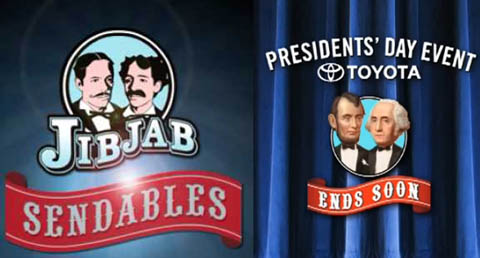By Robert F. Hurley
 Greg Smith’s March 14, 2012 op-ed piece in the New York Times, “Why I am Leaving Goldman Sachs” is a familiar story for those who follow the betrayal and repair of trust. Smith tells a story of his frustration and disillusionment at Goldman changing from a culture that valued service to clients to one that rewarded those who made the most money for the firm even if it betrayed client interests. To be clear, from a trust violation standpoint, Smith suggests that Goldman lacks integrity because it holds itself out to clients as being their servants when in reality the firm is focused on manipulating clients to buy or sell securities that benefit Goldman’s interests more than the clients’. If this is true, Goldman is saying one thing but doing another, which is duplicitous and lacks integrity.
Greg Smith’s March 14, 2012 op-ed piece in the New York Times, “Why I am Leaving Goldman Sachs” is a familiar story for those who follow the betrayal and repair of trust. Smith tells a story of his frustration and disillusionment at Goldman changing from a culture that valued service to clients to one that rewarded those who made the most money for the firm even if it betrayed client interests. To be clear, from a trust violation standpoint, Smith suggests that Goldman lacks integrity because it holds itself out to clients as being their servants when in reality the firm is focused on manipulating clients to buy or sell securities that benefit Goldman’s interests more than the clients’. If this is true, Goldman is saying one thing but doing another, which is duplicitous and lacks integrity.
What is interesting about Smith’s resignation letter is that it tells the all-too-common, inside story of how firms lose their way and violate trust. The message here, and one that is consistent with the BP, News Corporation, Toyota, and Lehman violations, is that these betrayals of stakeholder trust have root causes that are embedded in the organizational system. At BP there was rhetoric about safety after the 2005 Texas oil refinery explosion, but real currency of the realm continued to be profit; so they chose to save 7 million dollars to drill a Deep Water Horizon well that they knew was not the safest option. At News Corp, they said that rogue employees were responsible for the first hacking scandals (that it was not inherent in the system), but it was later revealed that hacking was a strategy used in the News Corp system to gain advantage among news outlets. Toyota had a strong quality culture, but a flawed and Tokyo centric recall system that failed to notify US drivers about cars that had been recalled in other countries. Lehman systematically overrode its own risk management practices because growth and profit is what really mattered.
Betrayals of trust by tyrants and government agencies show similar patterns. Time and time again incongruence in the organizational system cause major trust violations, which lead to demonstrations of trustworthiness by some aspect of the system, only for some other aspect of the organization to undermine it. A failure to align all elements of the organization’s architecture toward achieving its stated mission and values is what causes these betrayals of stakeholder trust.
High trust firms like Zappos, Google, Proctor and Gamble, and QuikTrip don’t fall into these traps. They do the hard work of clarifying mission and values, and they align leadership, culture, reward systems, and all of their core processes (product development, supply chain, etc.) toward serving stakeholders’ interests. These stakeholders — customers, suppliers, communities, and employees — know that these firms can be counted on reliably. The data is clear that these high trust firms derive many competitive advantages in lower employee turnover, more customer loyalty, more organizational resilience, and even higher stock price from this service. Doing the right thing and doing it consistently is a virtuous and effective way of doing business.
The good news for Goldman Sachs is that trust failures can be repaired and reputations restored. Mattel recovered brilliantly from its lead paint problem in toys made in China; Bill Clinton went from the disgrace of the Monica Lewinsky scandal to being a leader in global causes and presented as the world’s CEO in the media . But the path is not easy. Real trust repair requires

Cold Hard Flash brings news of a legal case that JibJab is pursuing against Toyota over this spot:
Click the following link to download a PDF of the complaint for damages to the California District Courts. JibJab is holding Toyota responsible for the ad, instead of Hoffman Lewis, the ad agency that produced the spot. The website TubeFilter summarized the document’s complaints:
1. Toyota Motor Sales, U.S.A., Inc. “…intentionally, knowingly and wilfully copied the JibJab Works in order to personally benefit from the widespread customer recognition and acceptance of said works and to capitalize upon the market created by these works.”
2. Toyota Motor Sales, U.S.A., Inc. made “unauthorized use of the JibJab Logo in interstate commerce and advertising…”
3. Toyota Motor Sales, U.S.A., Inc.’s “use of the JibJab Logo in its commercials is likely to confuse, mislead, or deceive consumers, the public, and trade as to the origin, source, sponsorship, or affiliation of said products, and is intended, and is likely to cause such parties to believe in error that [Toyota Motor Sales, U.S.A., Inc.]’s products have been authorized, sponsored, approved, endorsed or licensed by JibJab…”
4. Toyota Motor Sales, U.S.A., Inc. “intended to capitalize on [JiBJab]’s goodwill associated therewith for [its] own pecuniary gain.”
It should be noted that the offending spot is actually a visual mash-up of two different JibJab productions—the cut-out style animation of Founding Father’s Rap and the Starring You Tap Dance in which users can insert different heads on top of a live-action actor.
Personally, as unoriginal as I find the ad agency’s use of these techniques, copying someone’s graphic style—especially ones like these that aren’t exclusive to JibJab—would be a dubious case. However, Hoffman Lewis made the fatal mistake of also copying JibJab’s well-established animated trademark (the heads of the brothers who say “Jib” and “Jab”). In my eyes, that changes the dynamic of the entire commercial because it signals a clear intent on Toyota’s part to deceive viewers into thinking that JibJab created the spot.
Obviously, let me say that I’m no lawyer, but I have served as an expert witness for major corporations in similar infringement cases. Often times, the “this company stole my idea” claim is frivolous, especially when it’s coming from an amateur artist or writer with no industry experience or understanding of how the business works. In this instance though, I feel that JibJab has a legitimate concern. Judges seem to agree so far too: Toyota has twice requested a judge to dismiss the suit, and both times the judge has nixed Toyota’s motion.
It’ll be interesting to watch how this case plays out through the legal system and who ends up on top. Perhaps it’ll also serve as a wake-up call to all the ad agencies who freely take their ideas from existing animated films produced by independent filmmakers and small companies that lack JibJab’s resources to defend themselves.
(Disclosure: JibJab is a sponsor of Cartoon Brew’s 2011 Student Animation Festival. I learned about this case though by reading about it on Cold Hard Flash.)
 MTV beats out Vevo (as the web's most-visited music destination — thanks to metrics that now combine MTV site traffic with Warner Music Group a la their recent ad-sales deal. Meanwhile, on Vevo's parent site YouTube four of the five... Read the rest of this post
MTV beats out Vevo (as the web's most-visited music destination — thanks to metrics that now combine MTV site traffic with Warner Music Group a la their recent ad-sales deal. Meanwhile, on Vevo's parent site YouTube four of the five... Read the rest of this post
 Hasbro, Discovery prepare to launch The Hub (The new kids' cable channel will debut on October 10 targeting 6 to 12 year-olds with a mix of popular syndicated series and originals like a live-action adaptation of "Clue") (Los Angeles Times)
- BTS... Read the rest of this post
Hasbro, Discovery prepare to launch The Hub (The new kids' cable channel will debut on October 10 targeting 6 to 12 year-olds with a mix of popular syndicated series and originals like a live-action adaptation of "Clue") (Los Angeles Times)
- BTS... Read the rest of this post
 MTV buys Social Express (marking its debut in the social gaming space and stirring talk of an eventual publishing platform for independent game developers..and JerseyshoreVille jokes. Plus, as part of a promotional campaign from Zynga, actual... Read the rest of this post
MTV buys Social Express (marking its debut in the social gaming space and stirring talk of an eventual publishing platform for independent game developers..and JerseyshoreVille jokes. Plus, as part of a promotional campaign from Zynga, actual... Read the rest of this post
 Toyota on MySpace (supporting musicians to land record deals. Also Mediapost reviews "Haute & Bothered," Alloy's LG-sponsored web series as a rare instance where branded entertainment has to undersell its product) (MediaPost, reg. required)
-... Read the rest of this post
Toyota on MySpace (supporting musicians to land record deals. Also Mediapost reviews "Haute & Bothered," Alloy's LG-sponsored web series as a rare instance where branded entertainment has to undersell its product) (MediaPost, reg. required)
-... Read the rest of this post
 In today's Ypulse Interview we check in with Scott DeYager, Social Media Supervisor at Toyota and crisis communications expert. Slightly busier than usual these days, we were lucky to flag Scott down over email.
Below we ask a few questions about... Read the rest of this post
In today's Ypulse Interview we check in with Scott DeYager, Social Media Supervisor at Toyota and crisis communications expert. Slightly busier than usual these days, we were lucky to flag Scott down over email.
Below we ask a few questions about... Read the rest of this post
 Greg Smith’s March 14, 2012 op-ed piece in the New York Times, “Why I am Leaving Goldman Sachs” is a familiar story for those who follow the betrayal and repair of trust. Smith tells a story of his frustration and disillusionment at Goldman changing from a culture that valued service to clients to one that rewarded those who made the most money for the firm even if it betrayed client interests. To be clear, from a trust violation standpoint, Smith suggests that Goldman lacks integrity because it holds itself out to clients as being their servants when in reality the firm is focused on manipulating clients to buy or sell securities that benefit Goldman’s interests more than the clients’. If this is true, Goldman is saying one thing but doing another, which is duplicitous and lacks integrity.
Greg Smith’s March 14, 2012 op-ed piece in the New York Times, “Why I am Leaving Goldman Sachs” is a familiar story for those who follow the betrayal and repair of trust. Smith tells a story of his frustration and disillusionment at Goldman changing from a culture that valued service to clients to one that rewarded those who made the most money for the firm even if it betrayed client interests. To be clear, from a trust violation standpoint, Smith suggests that Goldman lacks integrity because it holds itself out to clients as being their servants when in reality the firm is focused on manipulating clients to buy or sell securities that benefit Goldman’s interests more than the clients’. If this is true, Goldman is saying one thing but doing another, which is duplicitous and lacks integrity.







